All Bonsai Trees Are Beautiful, but Each Type Has Its Own Distinct Charm —These Are 6 of Our Favorites
The art of bonsai creates elegant natural landscapes that will uplift your space
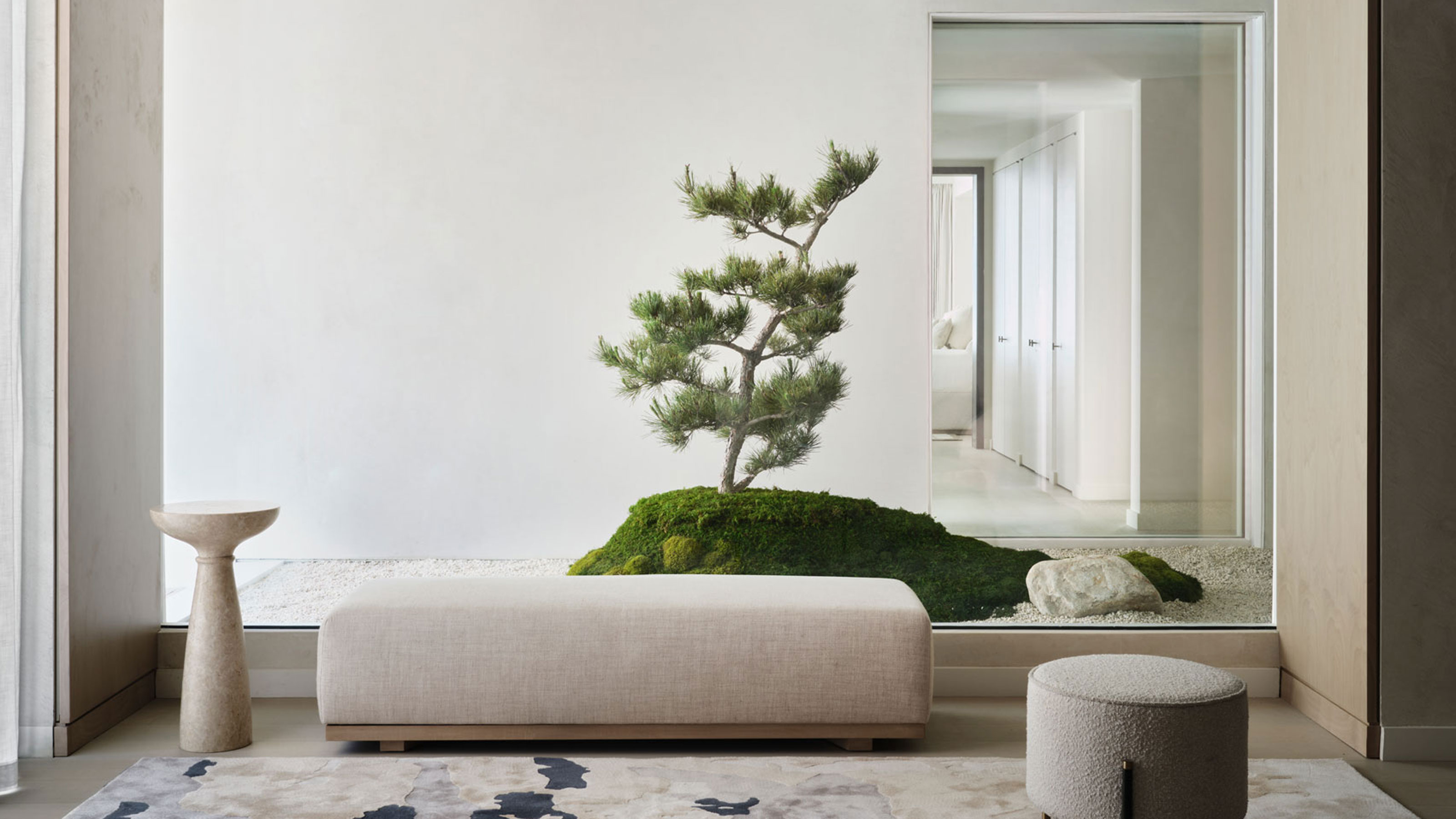
Choosing the right types of bonsai trees is key to growing them successfully. If you're looking for suggestions for growing indoors, it's worth knowing that tropical and sub-tropical tree species can be kept in the home, whereas temperate trees (those found in forests) can only be grown outdoors.
Good choices for ornamental types of bonsai trees that, like an indoor environment, are ficus and jade. If you plan on keeping your bonsai outdoors, your options are greater depending on your local climate. Juniper, Japanese maple and Chinese elm are all a good place to start. Some of these miniature beauties can be tricky to grow, though, so finding out how to care for bonsai trees is the key to your success. Different types of bonsai trees can also be categorized in terms of the broadleaf evergreen varieties that keep their leaves all year round, and deciduous ones that shed leaves in fall.
Always choose high-quality trees that have been well cared for, and if in doubt, buy from specialized bonsai traders. Now, find out our expert selection for the best types of bonsai trees to grow.
1. Japanese Black Pine
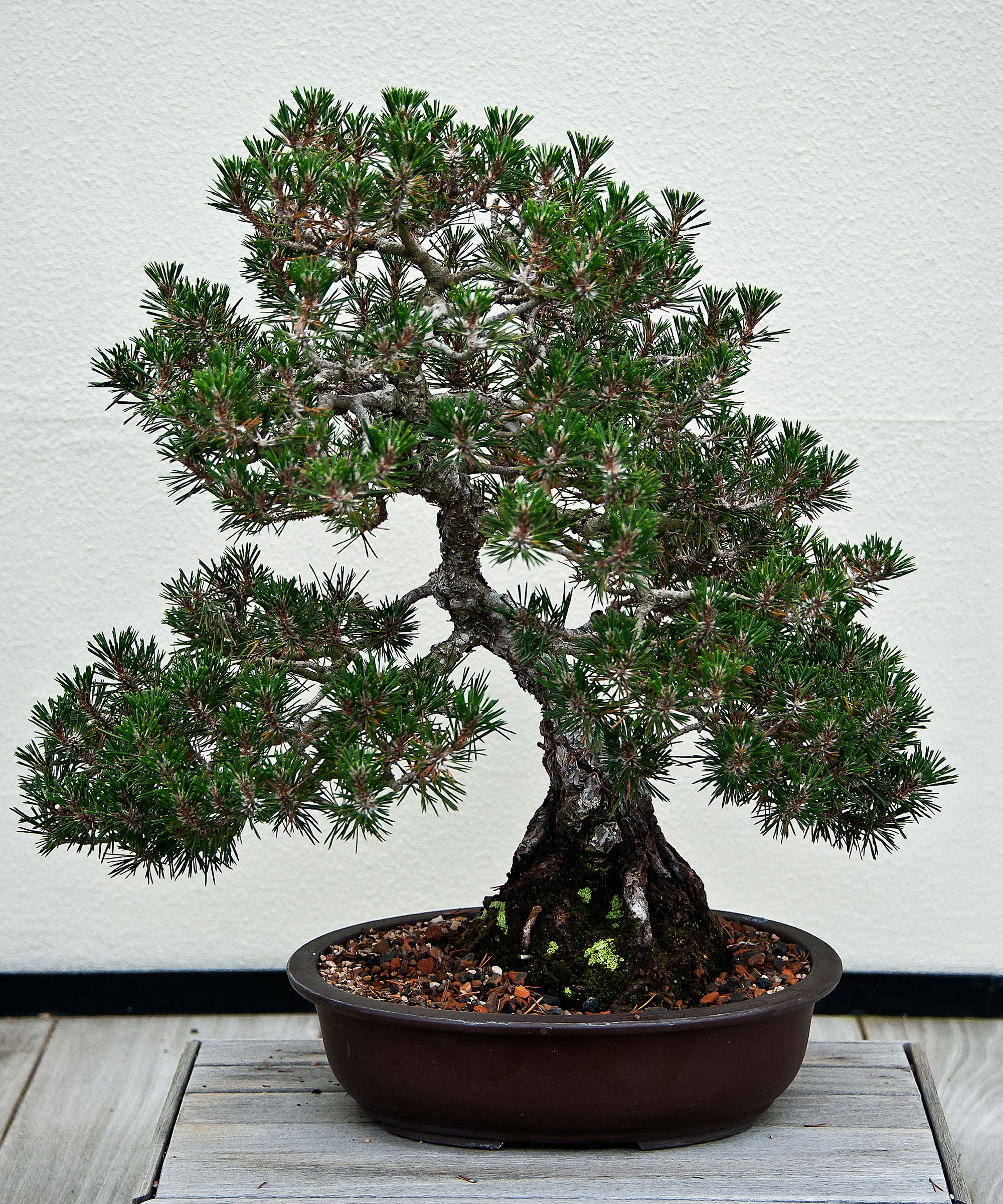
This bright bonsai will look perfect in living room corners.
"A 'best' variety to grow is very subjective and dependent on your goals as a bonsai artist, as well as which species you enjoy working with," says architect and bonsai enthusiast Howard Miller. "Traditionally, the Japanese black pine is considered one of the most iconic varieties."
This is an attractive evergreen variety with needle-shaped leaves, as you would expect from a pine tree. It likes a sunny position and a monthly feed with specialist feeds such as these Organic Bonsai Fertilizers from Amazon from January to October. Keep the soil moist and mist the foliage.
Keep it in shape by grooming out any overcrowded sections and old needles. Remove overlong shoots that spoil the outline, and they will soon be replaced by secondary shoots that will appear to give your tree a much denser look.
Think about how to display your tree. "It's traditional to put your bonsai on a stand in a tokonoma (nook for display) and pair it with a companion plant and possibly a scroll (painting)," says Howard. "All the items work together to tell a story."
There are plenty more Japanese indoor plants to choose from for your home, too, if you love this pared-down aesthetic.
Howard Miller has been practising bonsai for over 20 years. He is one of three principals at architects and modern preservationists Studio TJP. His passion for form and function and sophisticated sense of color combine to form a vision and produce uniquely memorable creations.
2. Chinese Elm
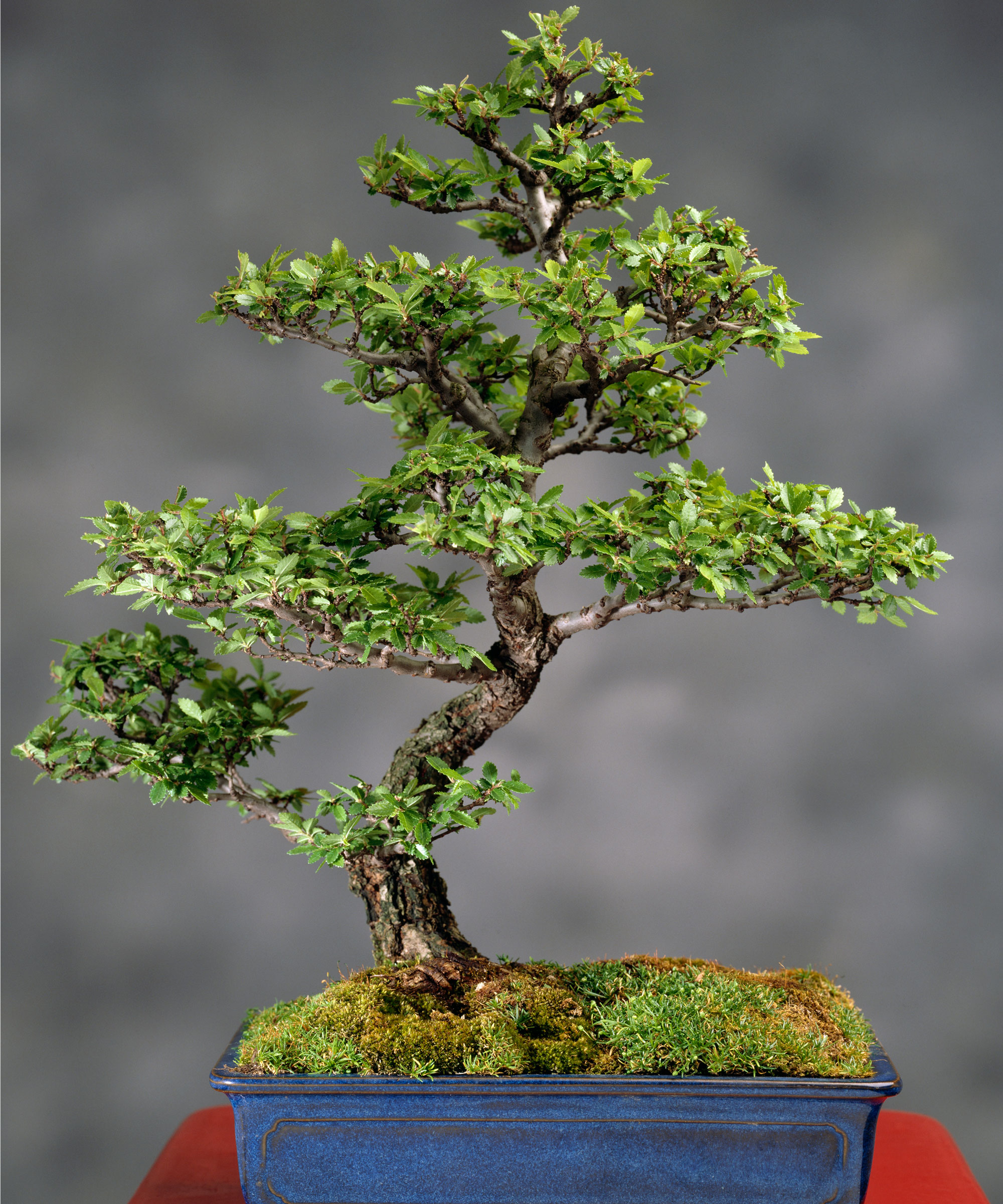
Bonsai trees grow in beautiful forms that add dimension to a space.
"If you want an aesthetically pleasing bonsai, the Chinese elm is best," says Ariel Vazquez, expert gardener at TeachMe.To and owner of Thyme & Sage Creations. "It's what a bonsai should look like and represent."
Keep this variety of bonsai tree out of direct sunlight and water once a day during hot spells. Feed weekly when the buds first open, then drop down to fortnightly. Never let the soil get dry or the young inner leaves will shrivel. When the buds open, feed weekly for a month, then every two weeks after that.
In terms of keeping this type of bonsai in shape, it should be kept well pinched back as it's a strong grower. Reduce shoots to two sets of leaves over the mass and back to one set of leaves at the apex. Always remove larger leaves to encourage finer texture if you're looking to see your indoor zen garden bonsai flourish.
Plant expert Ariel Vazquez is the owner of Thyme & Sage Creations LLC and is certified in basic Herbalism by The Herbal Academy (2022). She has been a member of Holistic Health Educators since 2023 and is soon to be certified in holistic health coaching. She regularly hosts events and workshops sharing her knowledge of gardens, herbs, and health to teach people how to live a healthier lifestyle.
3. Ficus
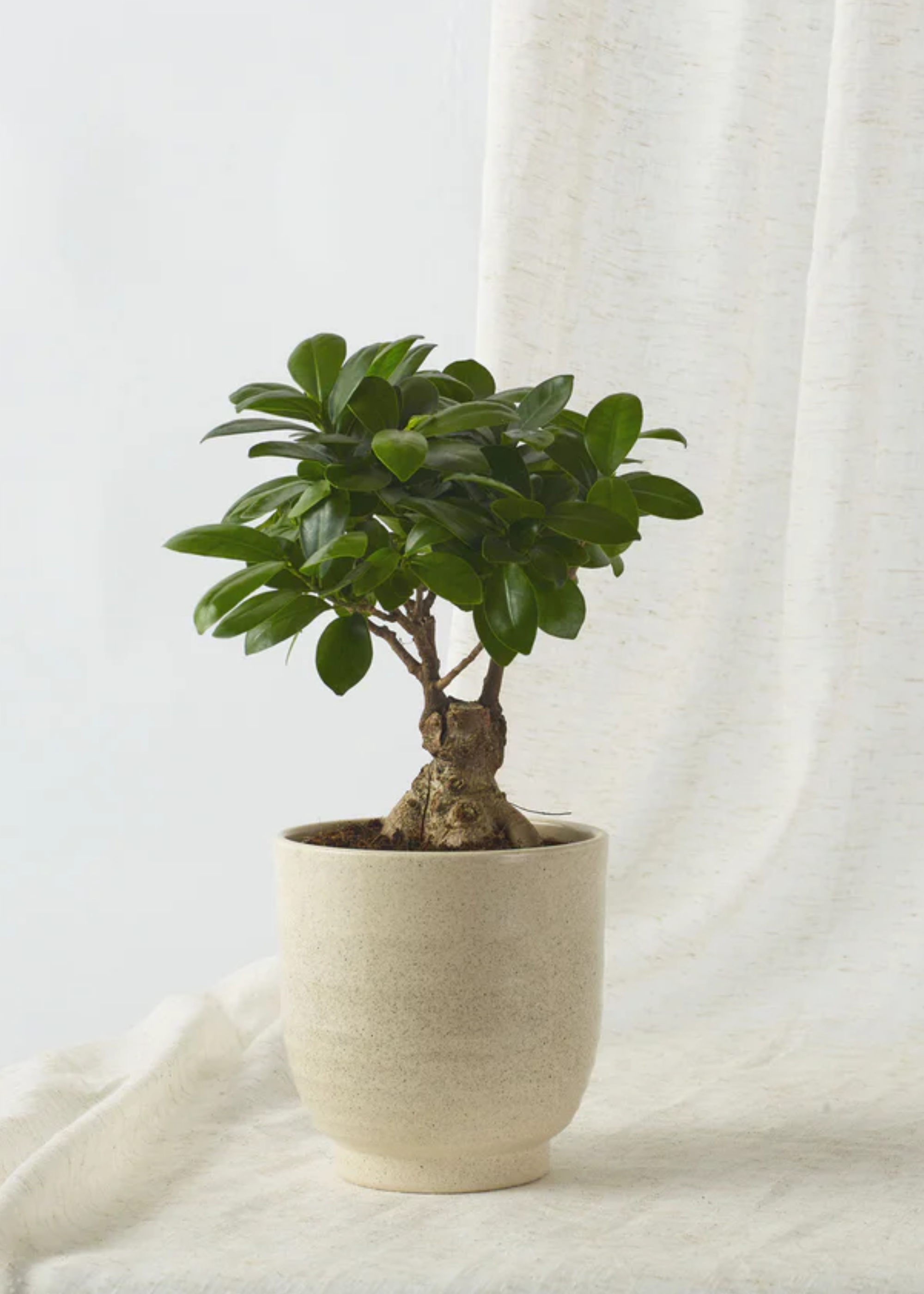
This bonsai tree will certainly add elegance and beauty to a home.
My favorite bonsai tree is easy to choose as I only have experience with one variety, which I've had for about five years now. It's a ficus, one of the most popular types of bonsai trees. There are lots of different varieties of ficus but mine is a ficus retusa, which is often chosen for bonsai work. It has dark green oval leaves and a slightly curved trunk.
Although it's an indoor tree, I put it outside in summer for a vacation when it's very hot, but I get it in at night if the temperature cools. It requires a lot of light, preferably full sunlight, and it likes humid conditions. I water it generously whenever the soil gets dry to the touch. During summer, I fertilize it every two weeks.
The advice is to repot your ficus in spring, every other year, using a basic bonsai soil mixture. But — full disclosure — I have never once repotted mine as it's thriving.
4. Japanese Maple
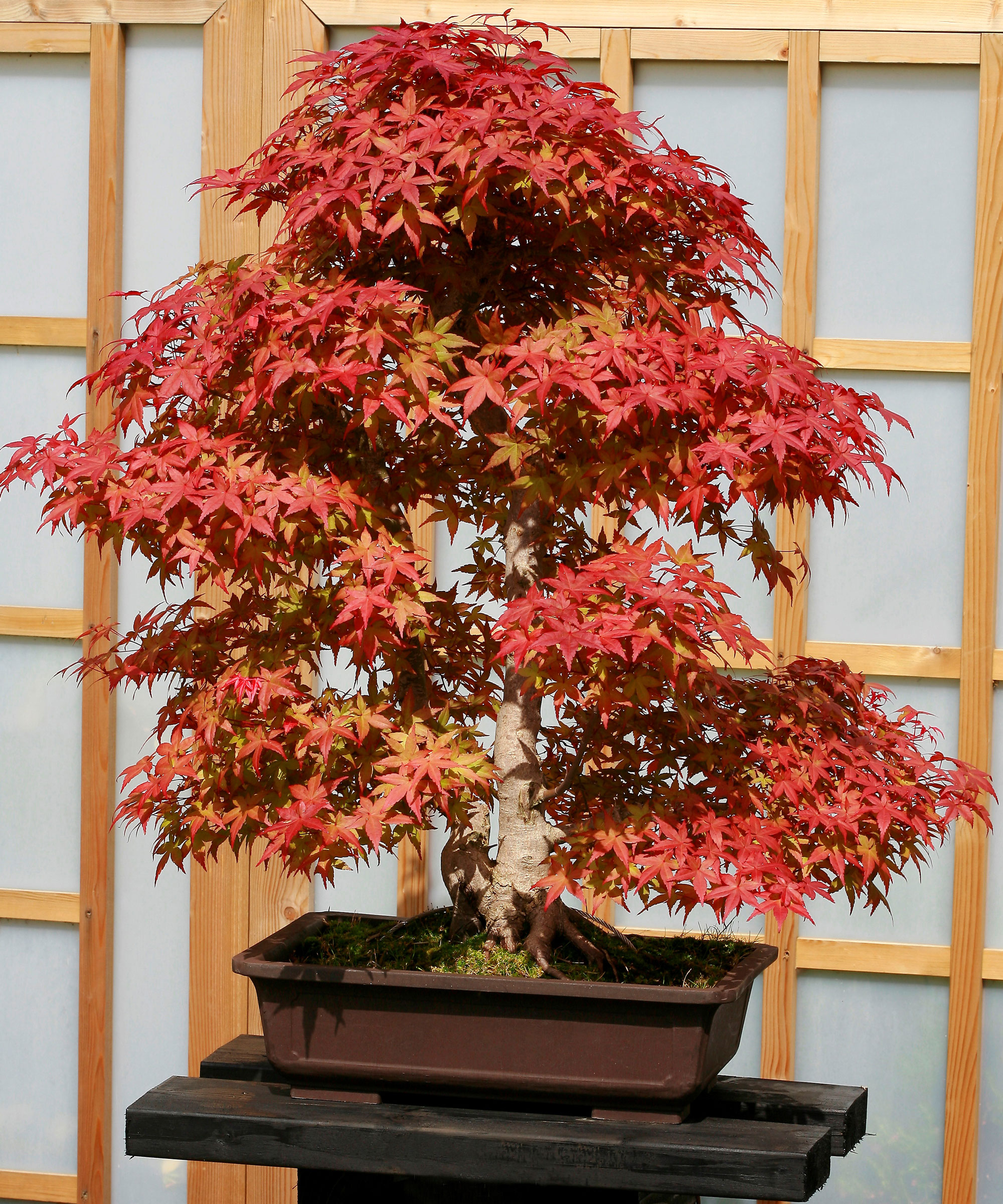
Fiery red bonsai's are a great way to add a touch of color to a home.
There are many popular types of maple trees but who would have thought you could find it in a bonsai form? The pretty Japanese maple (Acer palmatum) has leaves with five pointed lobes. There are various red-leaved forms of Japanese maple, which are very striking. The new leaves are yellowish or orange to bright red color, depending on the variety. The bark of young trees is green or reddish and smooth. It turns light gray with age and usually has an interesting texture.
Japanese maple bonsai enjoy sunny, airy locations, and they should be watered daily during the growing season. On hotter days, it's sometimes necessary to water your tree several times if the tree is a vigorous grower, as the soil should never be allowed to dry out completely. When the first buds open, feed weekly for a month, then fortnightly.
Shoots and twigs can be trimmed year-round. New growth should be pruned back to one or two pairs of leaves. In mid-March, this variety should be repotted every couple of years for best results. But if you're looking for a much larger version of this beauty, you can learn where to plant a Japanese maple tree for the best growth.
5. Crab Apple
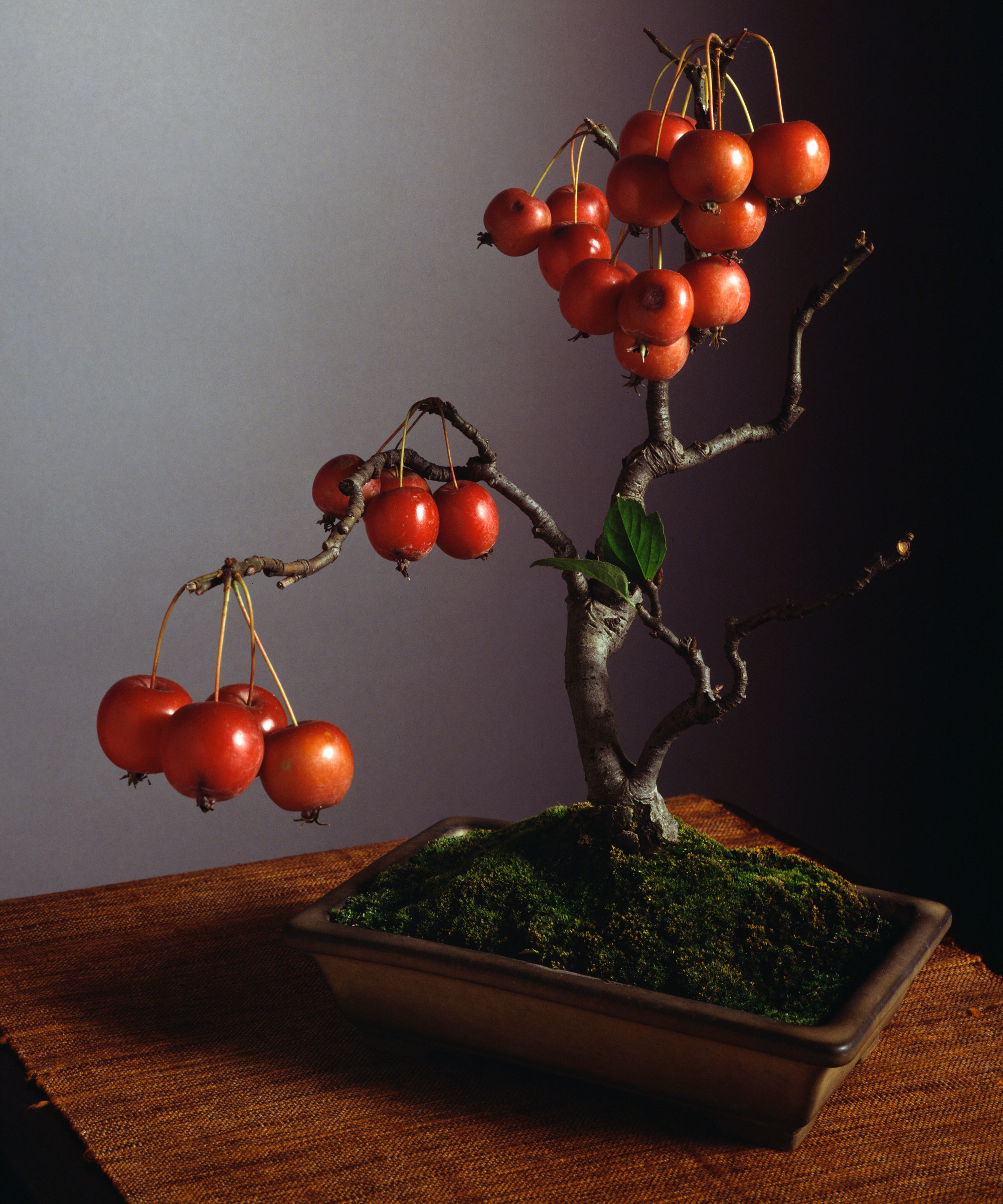
Who would have thought? Apples on a bonsai tree?!
"Most people think bonsai is about keeping a tree small, but really bonsai is about having a small tree look like a big old tree," says Howard Miller. "Recently, I have been enjoying my crab apple bonsai tree. It flowers every spring and even produces edible fruit."
For bonsai, crabapple species are preferred to larger apple varieties, as they have small dark red fruit in fall that decorate the tree. The fruit generally grows to about thumb-nail size. In spring, they produce beautiful white flowers flushed with pink. The crabapple bonsai needs a lot of water during the growing season and must not dry out, especially when it's producing flowers or fruit. Feed generously until they flower, then reduce to fortnightly feeding once the fruit has grown.
Pinch back new shoots, then leave pruning until fall after the leaves have fallen. Then, trim back any long shoots to neaten the outline. Be careful to avoid snipping any buds. This is one of the types of bonsai trees that likes to be repotted every year if it's a new tree and every two or three years once it gets older. And best of all, we think it makes for the perfect little kitchen plant.
6. Chinese Juniper
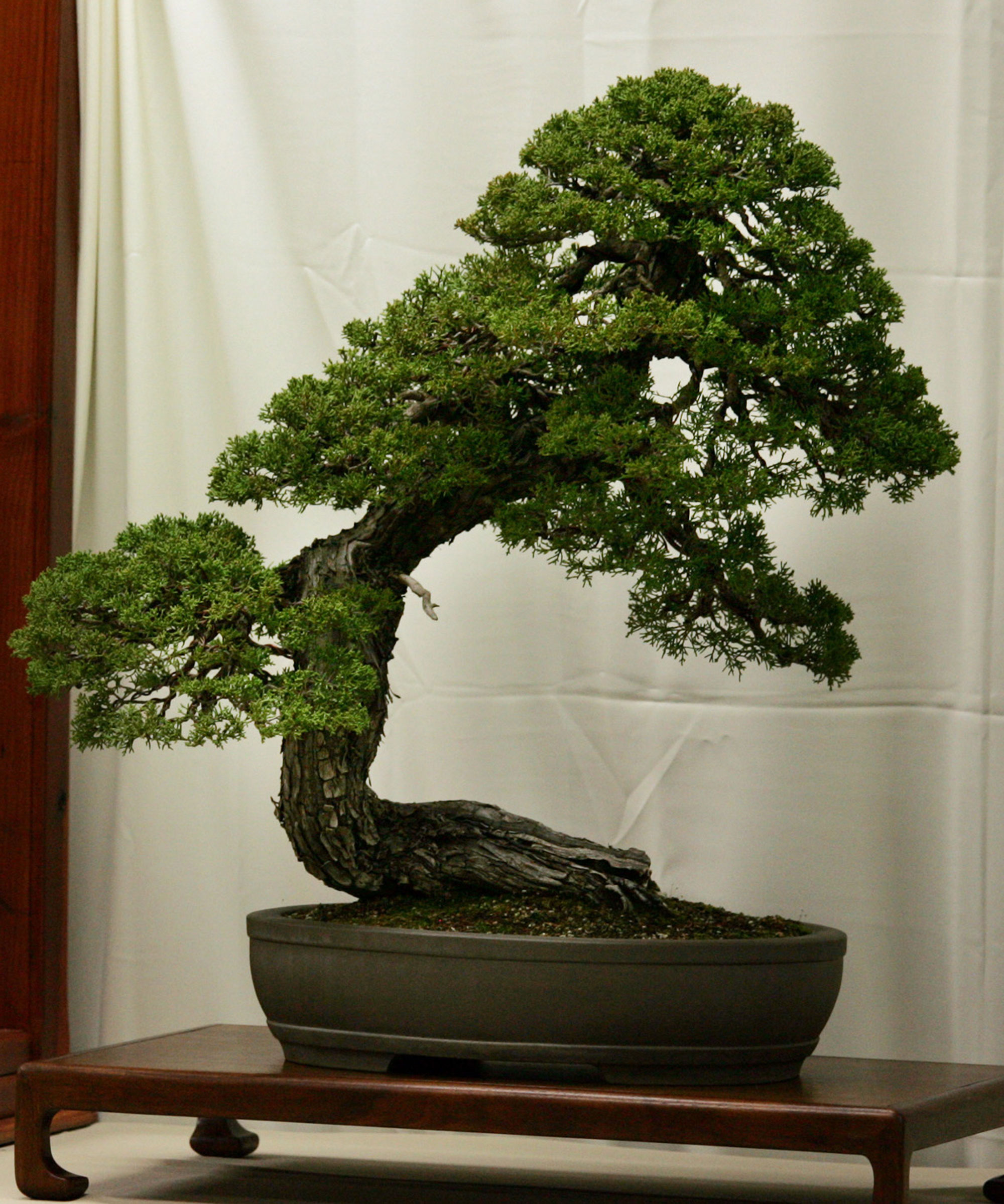
The Chinese juniper takes a form so beautiful, it would look perfect in a minimalists home.
This fine-textured evergreen is one of our favorite types of bonsai trees if you want to grow an outdoor variety. Place the tree outside, year-round, in a bright location with lots of sunlight, as this is not a type that can live indoors. During the winter, protect the tree once temperatures drop below 15°F.
There are two groups of junipers: one with scale-like foliage, such as the Chinese juniper, and the other with needle-like foliage, such as the Japanese juniper. Pruning consists of snipping off any shoots that break the silhouette. Junipers produced for bonsai are often wired when they are young, and dramatically twisted shapes are a popular feature.
Water well and mist regularly. Feed fortnightly from spring to fall with a nitrogen feed to encourage a deep color in the leaves. Repot in spring every couple of years for new plants and every five years for older ones.
FAQs
What Is the Best Bonsai Tree for Beginners?
The best bonsai tree for beginners is often considered to be the ficus as they are easy to care for. There are several types of ficus which are popular to grow as bonsai. Favorite varieties for beginners include ficus ginseng, ficus retusa and ficus microcarpa. It's a resilient bonsai tree that does well in the living room.
Meanwhile if you live in a climate where bonsai thrive outdoors there are a couple of good choices. "Beginners here on the west coast are generally encouraged to try a Juniper Procumbens Nana," says Howard Miller, who is based in Seattle. "It is fairly hardy in our climate and a vigorous grower, and thus fairly forgiving with aggressive trimming and styling. Another first deciduous tree might be the Japanese maple. Another vigorous grower, it is fairly tolerant of flood and drought."
What Are the Different Types of Bonsai?
There are many different types of bonsai trees in terms of shape and how they grow. "Trees with similar characteristics can be grouped into bonsai styles that are based on the shape or character of the trunk, roots, and branches," says Jonas Dupuich, author of The Little Book of Bonsai and the Bonsai Tonight blog. "Some of the most basic styles are defined by the shape of the trunk."
Jonas goes on to explain the differences in trunk shape and formation. With a formal upright bonsai, the trunk grows straight up, as you would expect, while an informal upright bonsai has a trunk that rises upwards with gentle curves. A slant-style bonsai grows at an angle, while a semi-cascade bonsai has a trunk that grows out to one side and begins to curve downward. A cascade bonsai has a trunk that follows a similar pattern but grows further downward.
So, there are plenty of different types of bonsai trees to choose from for your interior landscaping projects.
Jonas Dupuich runs a Northern California bonsai nursery where he teaches and writes about bonsai. His trees have been selected for display in local and regional exhibits, including the US National Bonsai Exhibition.
If you love the idea of filling your home with more unusual plants, there are plenty of ideas out there, including tall indoor plants that will make a real impact and indoor plants that flower all year round to bring 24/7 color.
Be The First To Know
The Livingetc newsletters are your inside source for what’s shaping interiors now - and what’s next. Discover trend forecasts, smart style ideas, and curated shopping inspiration that brings design to life. Subscribe today and stay ahead of the curve.
Lifestyle journalist Sarah Wilson writes about flowers, plants, garden design and trends. She has studied introductory garden and landscape design and floristry, and also has an RHS Level 2 qualification in the Principles of Plant Growth and Development. In addition to homesandgardens.com and livingetc.com she's written for gardeningetc.com, Real Homes, Modern Gardens and Country Homes & Interiors magazines. Her first job was at Elle magazine, during which time a trip to the beautiful La Colombe d'Or in St-Paul-de-Vence led to an interest in writing about all things botanical. Later as lifestyle editor at Country Homes & Interiors magazine the real pull was the run of captivating country gardens that were featured.
-
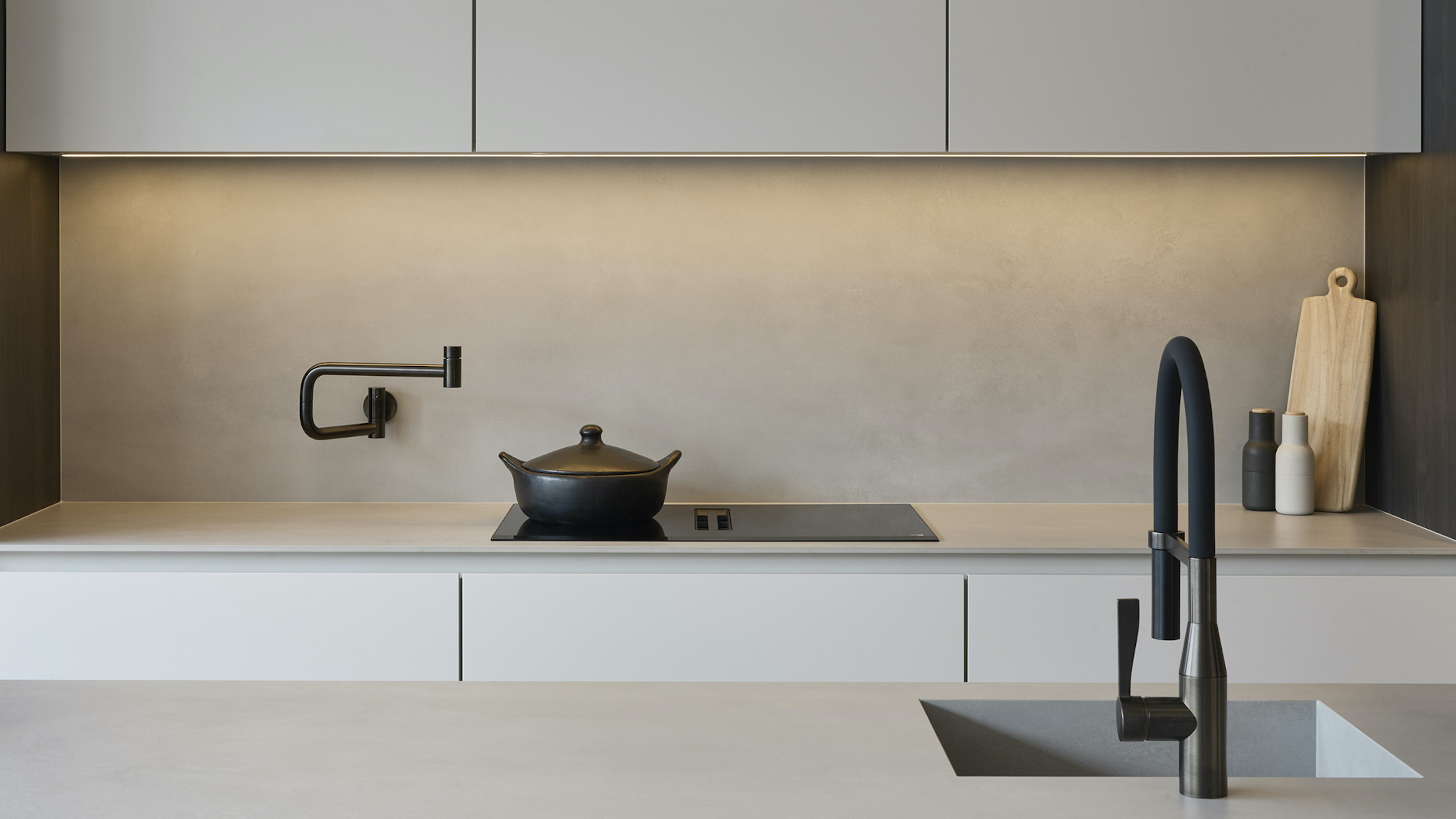 The 10 Different Types of Kitchen Taps — And the Pros and Cons of Each One to Know Before You Pick
The 10 Different Types of Kitchen Taps — And the Pros and Cons of Each One to Know Before You PickFrom sleek pull-outs to vintage bridge taps, explore 10 kitchen tap styles that mix function, flair, and a splash of cool
By Linda Clayton Published
-
 5 Things You Should Never Buy From a Thrift Store, According to People Who Know About Antiques
5 Things You Should Never Buy From a Thrift Store, According to People Who Know About AntiquesIt may look like treasure, but it may also just be trash. Here is how to know what to avoid while thrifting, and what to look for instead
By Olivia Wolfe Published
-
 The 10 Different Types of Kitchen Taps — And the Pros and Cons of Each One to Know Before You Pick
The 10 Different Types of Kitchen Taps — And the Pros and Cons of Each One to Know Before You PickFrom sleek pull-outs to vintage bridge taps, explore 10 kitchen tap styles that mix function, flair, and a splash of cool
By Linda Clayton Published
-
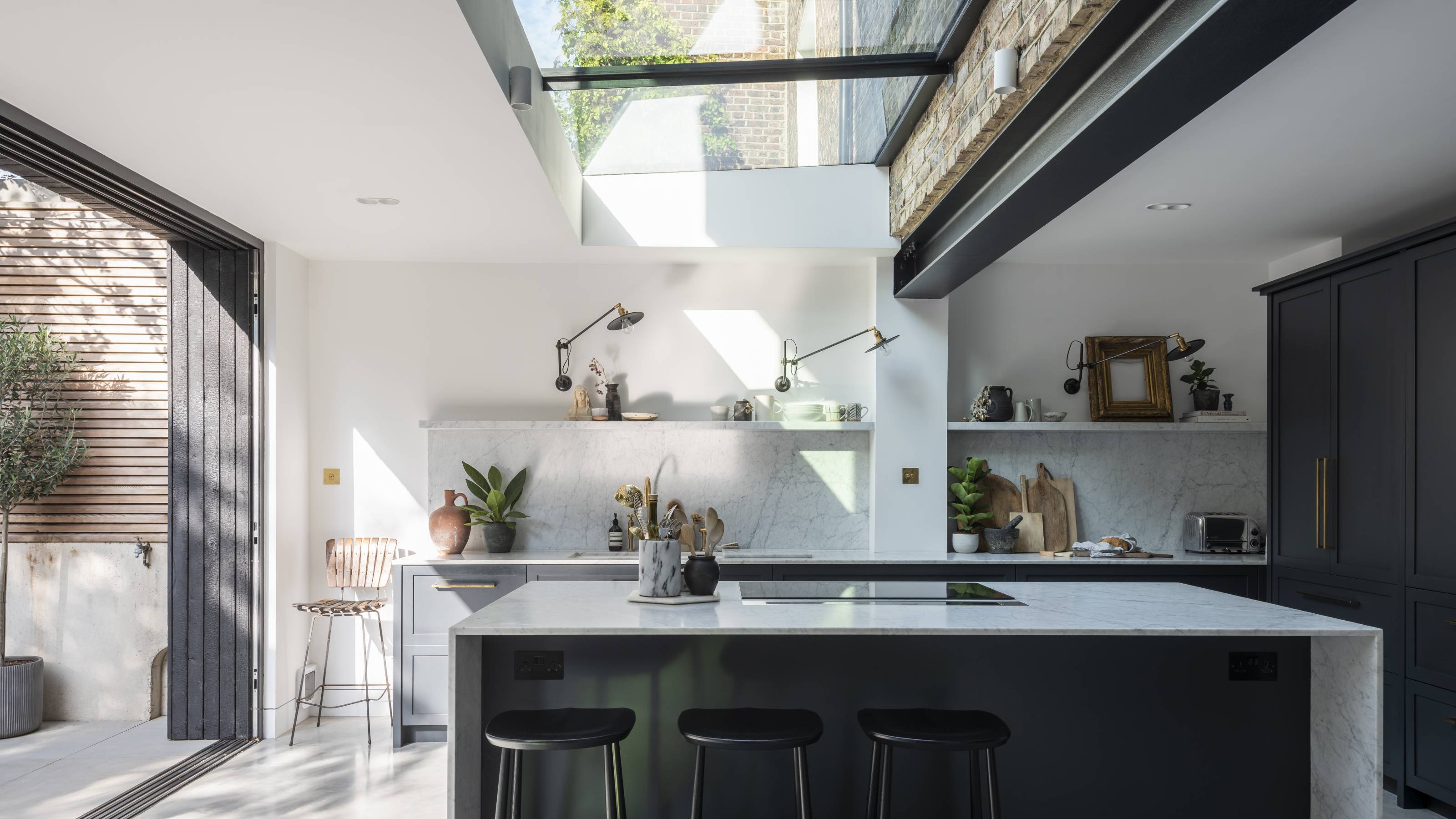 How Much Does an Extension Cost in 2025? Renovation and Design Experts Break Down Your Budget
How Much Does an Extension Cost in 2025? Renovation and Design Experts Break Down Your BudgetExplore how much different types of extensions cost in 2025 to budget for your project accurately
By Amy Reeves Published
-
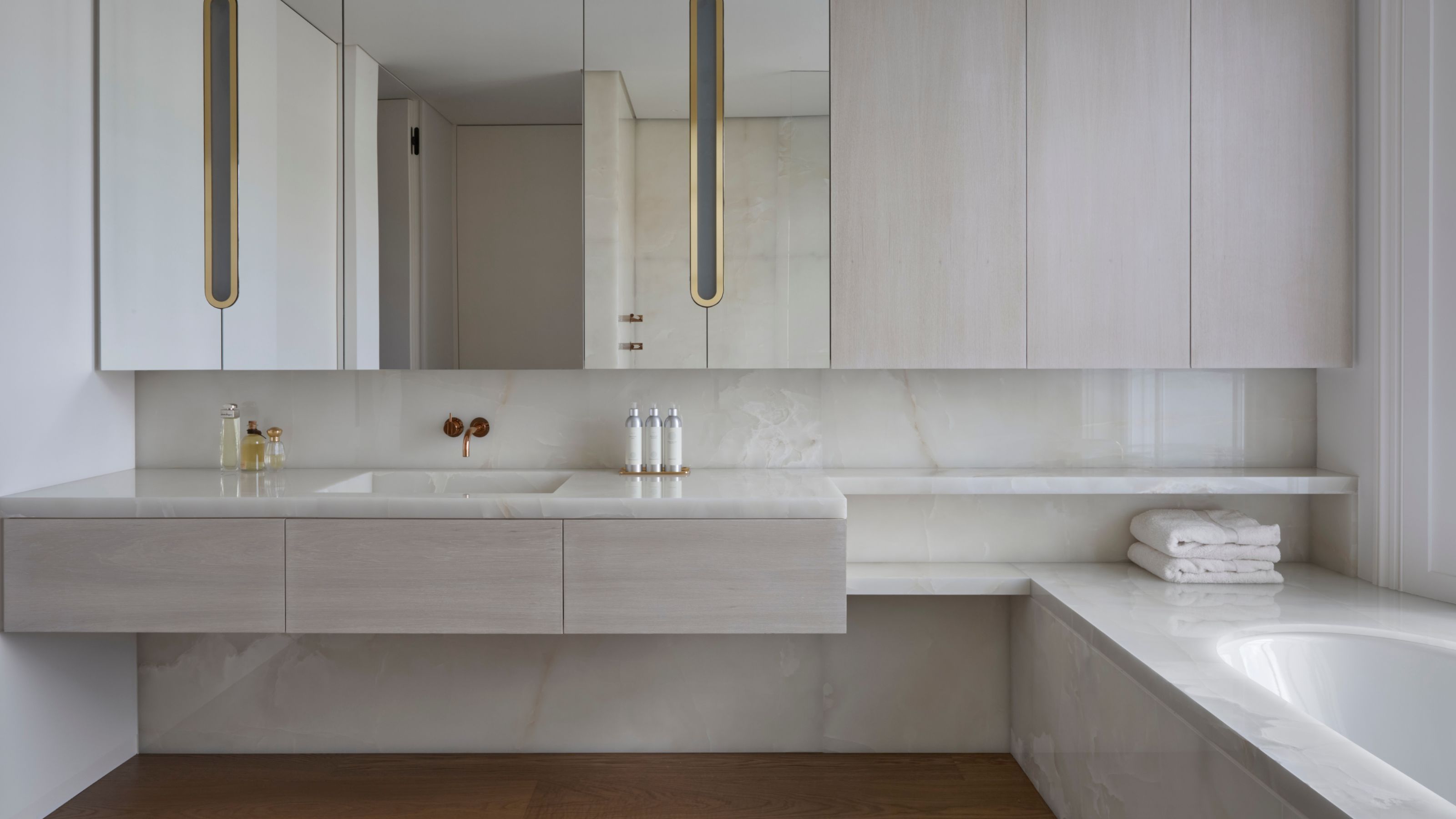 9 Bathroom Storage Mistakes You're Probably Making That Make Using This Space Much Harder — And What to Do Instead
9 Bathroom Storage Mistakes You're Probably Making That Make Using This Space Much Harder — And What to Do InsteadDiscover which mistakes are to blame for your overcrowded and cluttered bathroom
By Seraphina Kyprios Published
-
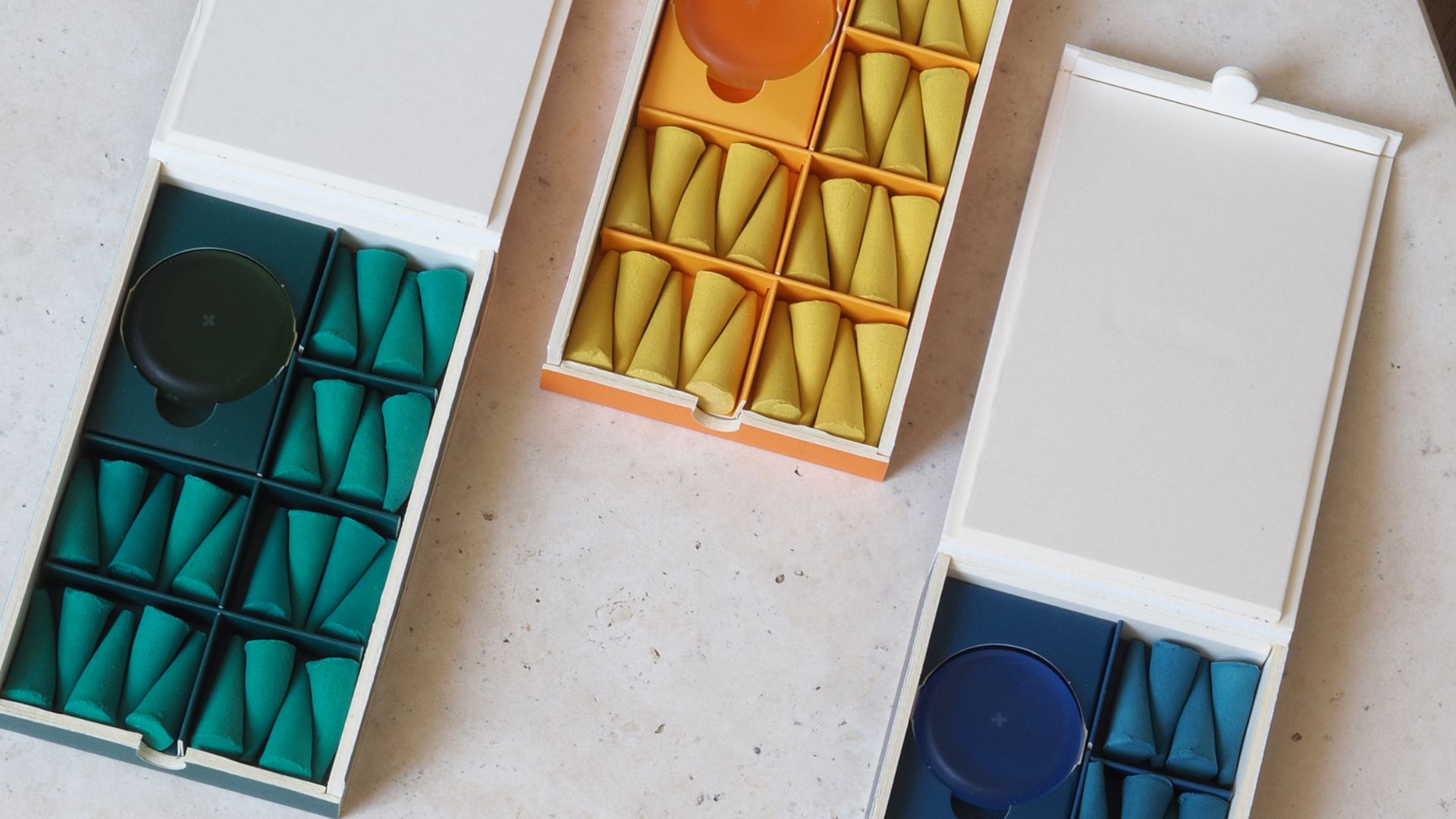 These 'Scenting Droplets' Might Be the Coolest (and Most Stylish) Way to Make Your Home Smell Amazing
These 'Scenting Droplets' Might Be the Coolest (and Most Stylish) Way to Make Your Home Smell AmazingIf you're looking to switch out your incense sticks for something more fun, then you should know about Ripple+'s incense droplets. Let me introduce you.
By Amiya Baratan Published
-
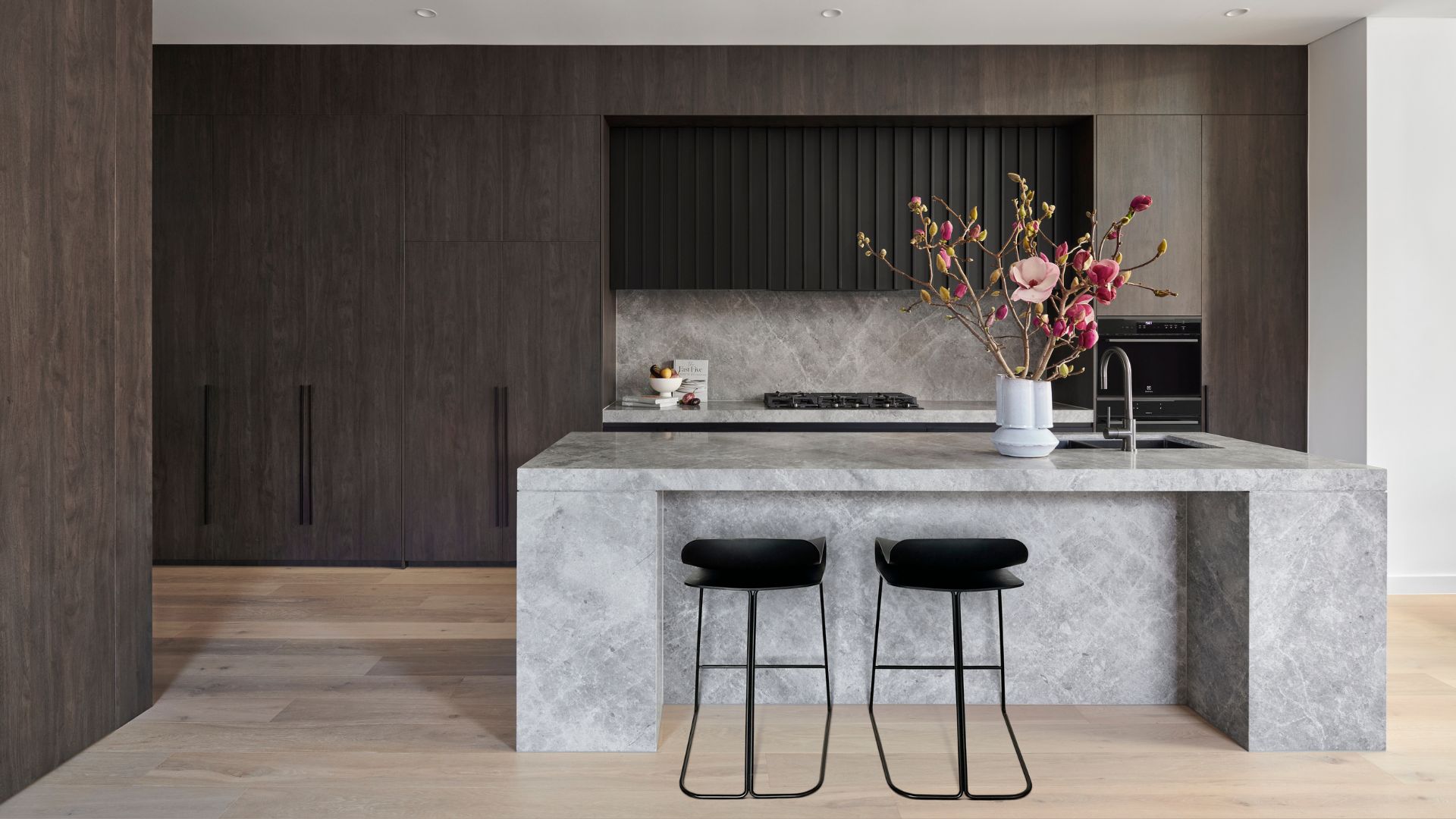 The Japanese Principle of Iki (粋) Is All About 'Refined Elegance' — Here's How to Embrace It in Your Home
The Japanese Principle of Iki (粋) Is All About 'Refined Elegance' — Here's How to Embrace It in Your HomeIf your interior vibe is all about refined elegance and opulent minimalism, you need to know about the Japanese principle of 'Iki'. Here's how to bring it home.
By Amiya Baratan Published
-
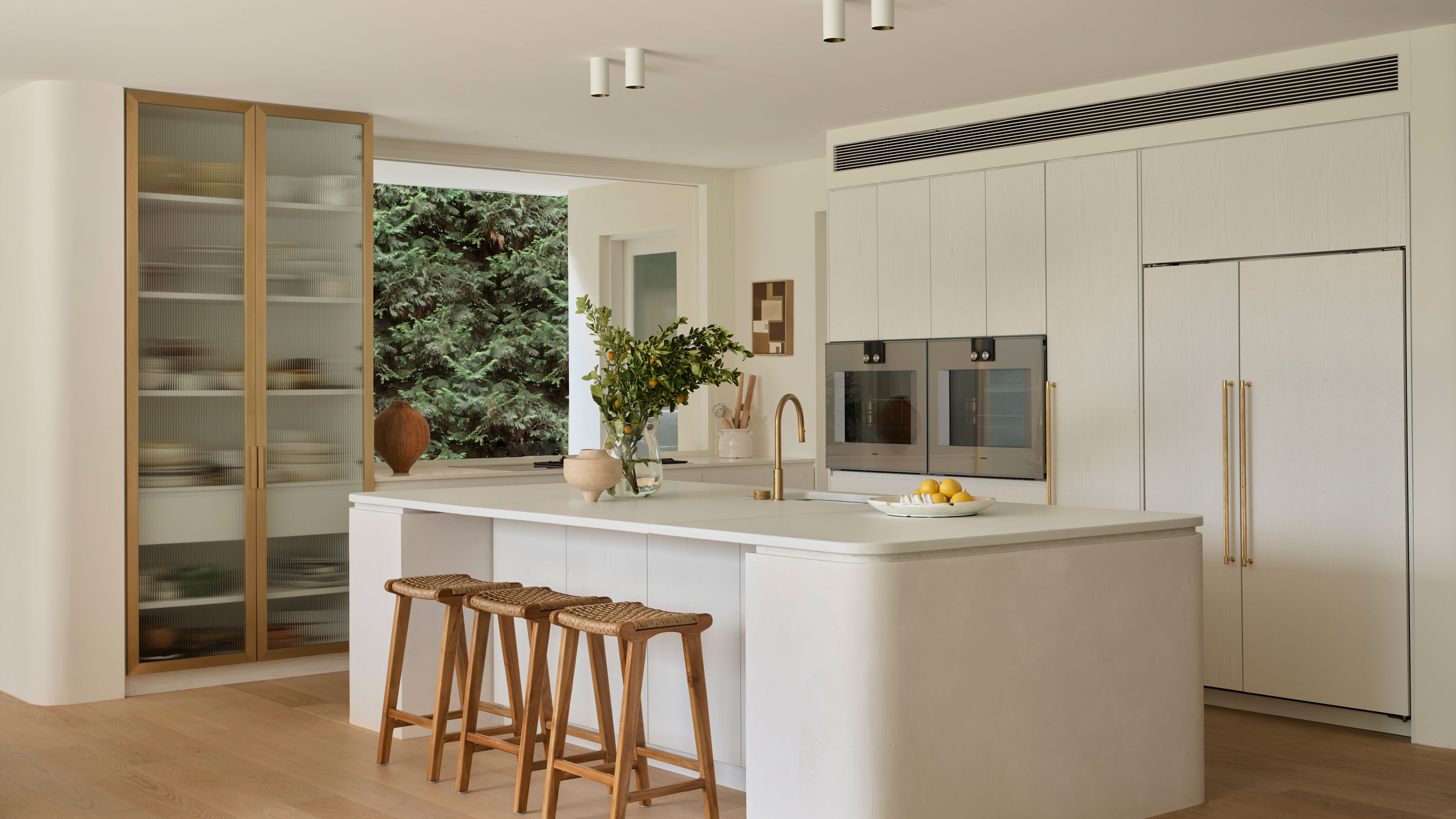 What Can I Choose Instead of Brass Taps? 4 Finishes That Are Emerging in 2025's Kitchens and Bathrooms
What Can I Choose Instead of Brass Taps? 4 Finishes That Are Emerging in 2025's Kitchens and BathroomsIf you want to try something a little different for your kitchen or bathroom finishes, these are the trending styles in taps beyond classic brass
By Seraphina Kyprios Published
-
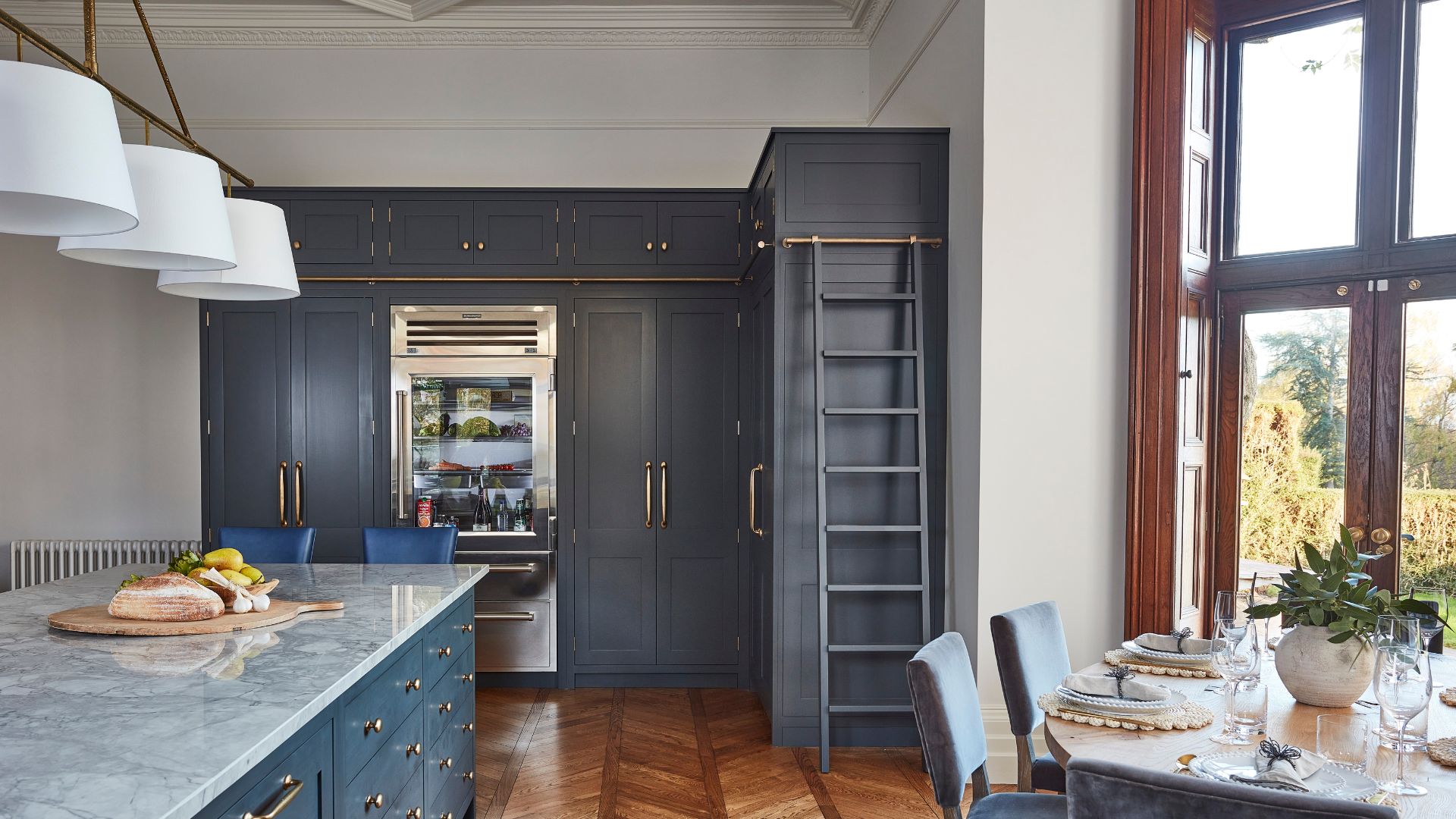 Kris Jenner’s 'All-Green' Glass Fridge Is My Organization Inspo of the Week — Here Are 5 Smart Storage Takeaways I'll Be Adopting
Kris Jenner’s 'All-Green' Glass Fridge Is My Organization Inspo of the Week — Here Are 5 Smart Storage Takeaways I'll Be AdoptingIf you're looking for fridgescaping inspiration, you might not think to look to Kris. But her all-green fridge says otherwise. Here are five tips we've learnt.
By Amiya Baratan Published
-
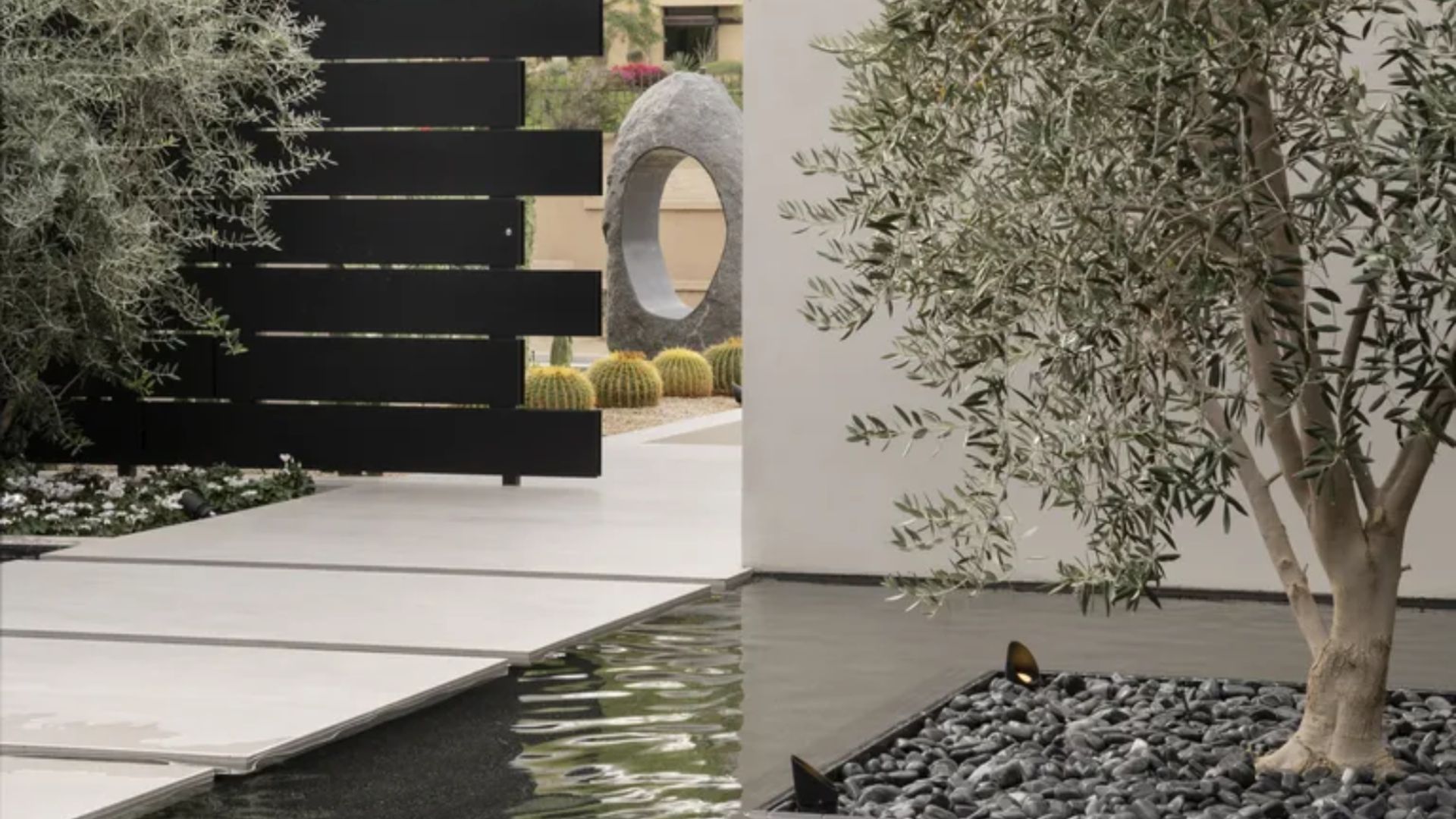 8 Tranquil Water Garden Ideas That Look Beautiful and Train Your Ear Away From Noisy Outdoor Distractions
8 Tranquil Water Garden Ideas That Look Beautiful and Train Your Ear Away From Noisy Outdoor DistractionsIf you enjoy spending time outdoors and are looking for ways to elevate your backyard's ambiance, here are 88 water garden ideas that are sure to inspire.
By Amiya Baratan Published